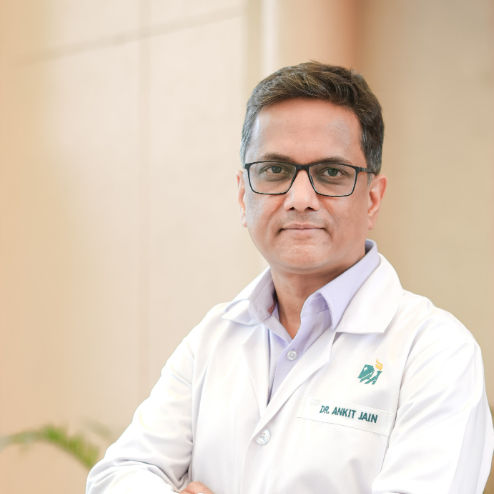Cancer Tomotherapy Revolution: All You Need To Know About Tomotherapy!
Discover how tomotherapy revolutionises cancer treatment with precision, fewer side effects, and improved patient outcomes worldwide.

Written by
Last updated on 3rd Jul, 2025
Tomotherapy is an advanced radiation therapy that combines imaging with intensity-modulated radiation therapy (IMRT) to precisely treat cancer. First envisioned in the 1990s, tomotherapy unifies computed tomography (CT) imaging with the delivery of radiation to help ensure that tumours are targeted while avoiding healthy tissues. This strategy is considered an evolutionary development in contemporary oncology.
Conventional cancer therapies such as standard radiation therapy, chemotherapy, and surgery are often not very precise and can cause substantial damage to surrounding healthy tissues. Conversely, tomotherapy is a highly focused approach, having fewer side effects and better patient-centric outcomes. This article deals with the revolutionary potential of tomotherapy, exploring its principles, applications, advantages, and challenges.
How Tomotherapy Works
Interpreting the operational concept of tomotherapy is important for understanding its revolutionary role in the treatment of cancer. Tomotherapy re-imagines the way we deliver radiation therapy by combining advanced technology with pioneering principles of treatment.
Principles of tomotherapy
Some of the principles of tomotherapy are:
Tomotherapy imparts radiation therapy in a helical or spiral mode and rotates the radiation source continuously around the patient.
It integrates CT scans to accurately identify tumours and modify the delivery of radiation accordingly.
Through a helical delivery system, rays are evenly distributed, irradiating tumours with unmatched accuracy.
Radiation doses are also adjusted according to the exact location and characteristics of the tumour so that it can kill more cells while having fewer side effects.
Role of technology and software in treatment
Tomotherapy runs on advanced technology and software. Utilising advanced algorithms, the system determines the optimal radiation dose distribution, maximising the impact on the tumour while minimising exposure to healthy tissue. Real-time imaging technology progresses the account of therapy in a significantly improved way. It enables the therapy to be adjusted according to the patient's anatomy and tumour alteration during the therapy process.
Advantages of Tomotherapy
Tomotherapy offers numerous advantages over traditional cancer treatments. Many oncologists and patients prefer tomotherapy over normal cancer treatment due to the various benefits it has. Its precision and capacity for minimising side effects are among its standout features.
Precision and accuracy in tumour targeting
The greatest benefit of tomotherapy is its unrivalled accuracy. It enables clinicians to treat tumours with millimetre-level precision by combining imaging and radiation delivery. This reduces the likelihood of either underdosing the tumour or overdosing the surrounding healthy tissues, which increases the effectiveness of the treatment.
Minimisation of damage to surrounding tissues
Traditional radiation therapy damages not only tumour tissues but also healthy tissues that surround the tumour and has potential side effects. Tomotherapy meets this challenge by targeting high-precision radiation beams, which minimises collateral damage. This capability is especially advantageous when treating tumours in proximity to critical organs or structures.
Types of Cancers Treated with Tomotherapy
Tomotherapy is versatile and effective in treating various types of cancer. Its adaptability and precision make it suitable for both common and rare malignancies.
Common cancers effectively treated
Tomotherapy has proven effective in treating a wide range of cancers, including breast, prostate, lung, and head and neck cancers. This kind of treatment usually employs accurate and adaptable technologies that suit these cases, particularly cancers that are irregular-shaped or that reside in hard-to-reach areas.
Emerging applications in rare cancer treatments
Beyond cancer types more commonly encountered, tomotherapy applications are being investigated for rare and difficult malignancies. In addition, tomotherapy has also shown promising results for a wide range of clinical needs, particularly in lesions such as sarcomas and paediatric and central nervous system cancers.
Patient Experience During Tomotherapy
A key component of any cancer treatment is the patient experience. Tomotherapy is intended to be as comfortable and effective as possible, with fewer side effects.
What patients can expect during treatment
Tomotherapy patients can be assured of an efficient and non-invasive treatment experience. Each session starts with a CT scan to check the position of the tumour, followed by radiation delivery. The process is usually painless, with the sessions taking 15 to 30 minutes. The patient is advised not to move during treatment for precise targeting.
Management of side effects
Although tomotherapy is designed to reduce harm to healthy tissues, some patients may experience adverse effects like tiredness, skin irritation, or minor discomfort in the treated area. Healthcare professionals provide tips and support to manage these effects, ensuring a better overall treatment experience. Personalised care plans enable patients to sustain the quality of life they desire throughout their treatment journey.
Clinical Outcomes and Studies
Critical clinical and research data demonstrate valuable insights into the effectiveness of tomotherapy. These studies showed its success in treating a wide range of cancers.
Success rates and effectiveness
The success of tomotherapy in controlling high rates of tumour control has been shown over and over in clinical studies. It has permitted more accurate and homogeneous doses of radiation to improve survivorship and reduce locoregional recurrence for different cancer types.
Recent studies and ongoing research
Recent research has focused on enhancing tomotherapy’s capabilities through advancements in imaging, software, and delivery techniques. Ongoing studies are exploring its application in combination with other treatments, such as immunotherapy and targeted therapy, to further improve patient outcomes.
Cost and Accessibility
Tomotherapy cost and accessibility are crucial considerations when diving into a wide implementation of the therapy. The cost of tomotherapy can range from the type of cancer to the number of treatment sessions to regional healthcare infrastructure and accessories. Hence, although it is expensive compared with ordinary radiation therapy, often, the results for complex cases would help compensate for its cost by reducing the number of side effects and achieving more positive outputs.
Despite its benefits, the accessibility of tomotherapy remains a challenge in some regions. Developed countries with advanced healthcare systems are more likely to offer this technology while developing nations face barriers related to cost and infrastructure. Efforts are underway to make tomotherapy more widely available, ensuring equitable access to cutting-edge care.
Future of Cancer Tomotherapy
The future of tomotherapy is promising, with advancements in technology and global efforts to expand its reach. These developments could redefine cancer treatment.
Technological advancements on the horizon
Patient-centredness and continuous technological innovation are the future of tomotherapy. Further advances in artificial intelligence (AI), machine learning, and imaging technologies will continue to improve its accuracy and productivity. Together, these advancements will ensure tomotherapy remains one of the most powerful weapons in the fight against cancer.
Potential global impact on cancer treatment
As tomotherapy becomes available on an ever wider scale, its impact on cancer care worldwide is likely to increase. With its ability to improve treatment outcomes and lower side effects, it could revolutionise oncology practices globally. This will require close collaboration across governments, healthcare organisations, and technology developers.
Challenges in Tomotherapy
Despite its numerous benefits, tomotherapy faces several challenges. Addressing these issues is vital to ensuring its broader implementation.
Limitations and challenges in implementation
Despite the numerous benefits that tomotherapy offers, it does have its drawbacks. These include high costs, the lack of specialised training, and complex infrastructure requirements, all of which make it difficult to achieve widespread adoption. Moreover, some patients are not eligible for this treatment based on their specific medical condition.
Addressing barriers to widespread adoption
To overcome these barriers, initiatives that include enhanced healthcare infrastructure funding, clinician training programs, and cost-effective solution research are crucial. Leading stakeholders must work together to allow the advantages of tomotherapy to reach a broader patient population.
Conclusion
Tomotherapy represents a revolutionary approach to cancer treatment, offering unmatched precision, reduced side effects, and improved patient outcomes. While challenges such as cost and accessibility remain, its benefits make it a valuable addition to modern oncology. Tomotherapy is likely to have a bright future with continuing improvements to the technique itself. As this technology continues to advance, it offers the promise of revolutionising cancer care and providing hope and better outcomes for patients around the globe.
Consult Top Oncologists
Consult Top Oncologists

Dr. Tarun Jindal
Uro Oncologist
14 Years • MS (AIIMS, New Delhi), MCh (Gold Medalist), Fellow, VUI, Henry Ford Hospital, Detroit, USA; Robotic and Laparoscopic surgeon
Kolkata
Apollo Multispeciality Hospitals , Kolkata, Kolkata
(100+ Patients)

Dr. Sandeep Muzumder
Radiation Specialist Oncologist
21 Years • MBBS (JIPMER, Pondicherry), MD (AIIMS, New Delhi)
Bhubaneswar
Apollo Hospitals Old Sainik School Road, Bhubaneswar

Dr Nikhil Suresh Ghadyalpatil
Oncologist
18 Years • MBBS, MD (G. Med), DNB (G.Med), MNAMS DM (Medical Oncology - Tata Memorial Hospital) European Certification In Medical Oncology (ECMO) MRCP (Med Onco SCE), PDCR
Hyderabad
Apollo Hospitals Jubilee Hills, Hyderabad

Dr. Indranil Ghosh
Oncologist
13 Years • MBBS, MD, DM (Med. Onco.)
Kolkata
Apollo Multispeciality Hospitals , Kolkata, Kolkata
(75+ Patients)

Dr Ankit Jain
Medical Oncologist
20 Years • MBBS, (MAMC Delhi), MRCP Oncology (London), MRCP Medicine (London), MSC Oncology(UK) CCT(UK)
Delhi
Apollo Hospitals Indraprastha, Delhi
(25+ Patients)
